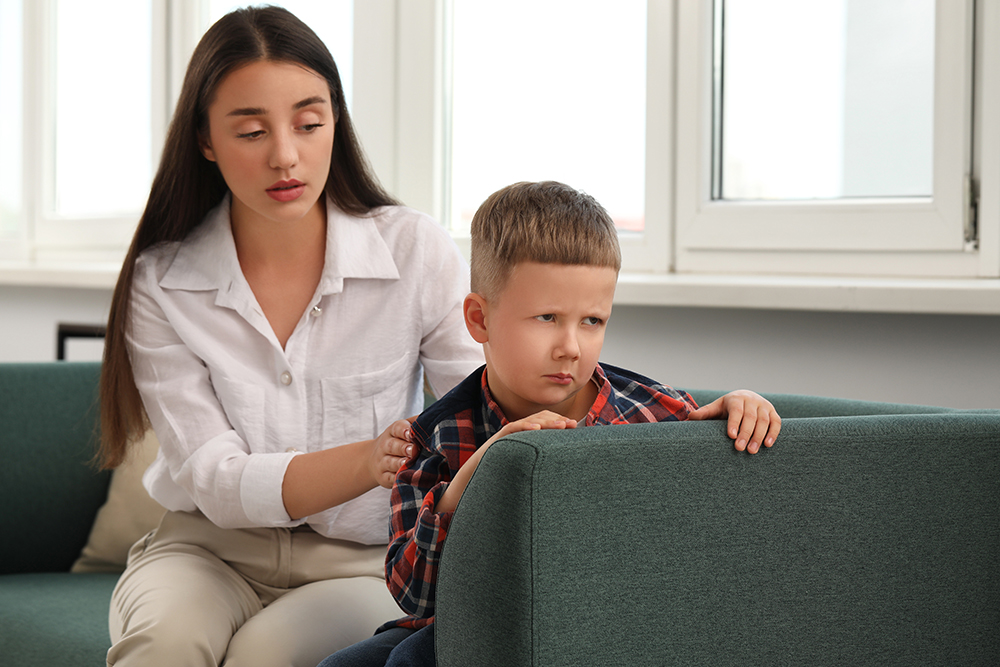Your family is in the car heading on a great summer adventure. Then your child calls out from the back seat, pleading with you to pull over because she doesn’t feel well. Once she gets some fresh air, she starts feeling better.
The likely diagnosis?
Motion sickness can affect anyone but is more likely in children ages 2-12 years old. Girls are more likely to suffer from motion sickness than boys. (In adults, pregnant people or people with a history of migraines are at high risk for motion sickness.) And motion sickness can happen on any form of transportation: car, boat, train or plane.
If you are heading on a trip this summer and are worried about your little one feeling sick while traveling, here is some information that can help you make the best of the situation, as well as some overall tips for traveling with children.
Motion Sickness Explained
Motion sickness (car sickness, sea sickness, etc.) can occur when there is confusion or conflicting information from the inner ears and eyes. Our inner ears and eyes help us understand where we are. But if, for example, a child is looking down reading a book while in the back seat of the car, his ear senses motion, but his eyes won’t. These conflicting sensory inputs can make children, in particular, feel nauseous or dizzy. Other symptoms of motion sickness are having an upset stomach, sweating, feeling tired and having a decreased appetite.
Preventing Motion Sickness
Preventing motion sickness in children can take some trial and error but try these tips and see if any of them work for your child:
• Have your child eat a light snack before going on a car ride. Children are more likely to experience motion sickness on an empty stomach or a full stomach.
• Select a seat where there is the least amount of motion. On a boat, that would be lower deck or midship cabins. In a car, sitting in the front seat – if the child is old enough and tall enough – may be better than sitting in the back because the child can look forward to the horizon; the visual information is therefore consistent with the motion the inner ear is sensing. On a plane, try for a seat over the front edge of the wing and choose a window seat. On a train, choose a forward-facing window seat. In any mode of transportation, children should keep their head firmly against the back of the seat.
• Discourage your child from reading or looking at screens while in a car, train, plane or boat/ ship.
• Try distractions, such as aromatherapy scents (mint or lavender). For little kids, try playing or singing with them.
• Give ginger a try. Ginger tea or ginger chews may be helpful for some children.
• In a car, open the windows or turn on the fan/ air conditioner.
• Try mindful breathing exercises.
If your child is nauseous in a car, pull over and allow your child to lie flat, if possible, and close their eyes for a few minutes. Hopefully, they will start feeling better soon.
Medications for Motion Sickness
As a board-certified pediatrician, I often recommend two medications for motion sickness: dimenhydrinate (Dramamine) and diphenhydramine (Benadryl). Choose one to give about 30-60 minutes before a trip. (Don’t give both.)
Benadryl should not be used in children under age 2. It should be used with caution in children ages 2-6; talk to your pediatrician first. Benadryl causes most children to become sleepy. However, I encourage giving children a trial dose before traveling to see how they react, because some children may become agitated instead.
If Benadryl, Dramamine or other preventive measures don’t work, talk to your pediatrician about other options.
Motion sickness does get better for most kids over time, and many do outgrow it by the teenage years.
Other Tips for Traveling with Kids
In addition to preparing for motion sickness, I encourage families to take other steps before traveling with kids, including:
• Packing prescription medications, including any prescribed inhalers or epinephrine pens.
• Ensuring your child’s vaccinations are up to date, especially if traveling abroad. Also, check with your pediatrician if you are traveling to another country to see if any additional vaccinations are needed.
• Pack hand sanitizer.
• Travel with children’s strength acetaminophen and ibuprofen. Also consider packing Benadryl, hydrocortisone cream, a thermometer, a topical antibiotic and adhesive bandages. It’s better to have these supplies on you than take time out of your trip to purchase them, especially if in another country.
• Prepare for ear pain if traveling on a plane. Babies can suck on a pacifier or bottle, and older kids can suck on a lollipop during takeoff and landing to try to minimize ear pain.
Traveling with children can be challenging but is usually extremely worthwhile. The memories made are priceless, and the experiences can be educational and rewarding.

